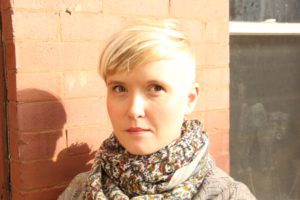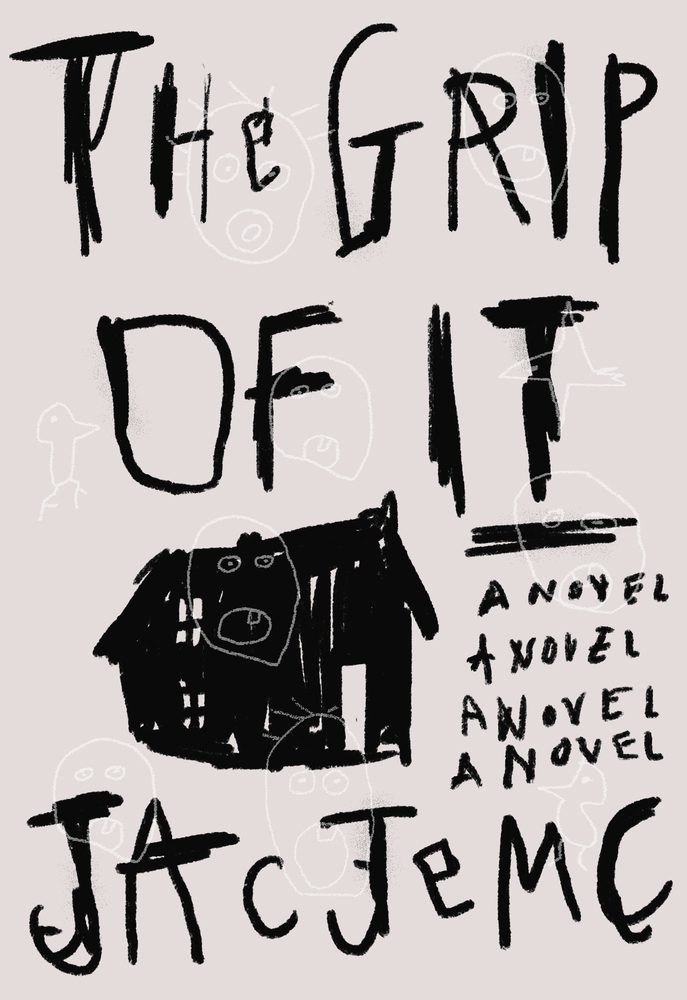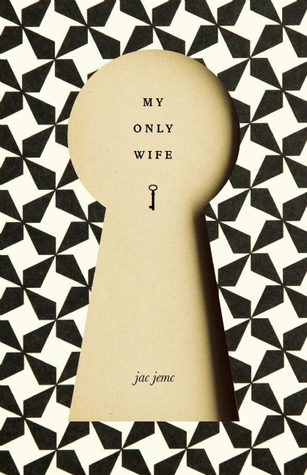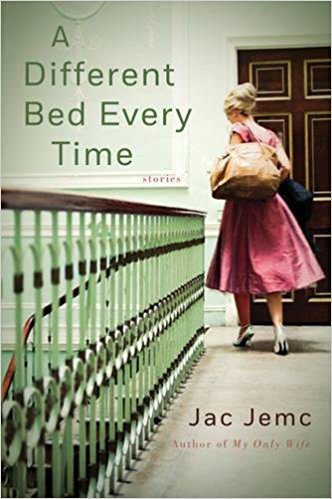
Jac Jemc’s new novel, The Grip of It, opens with a young couple moving into a new home. James and Julie find a house just outside of the city where they met, and though we learn more about their backstory as the novel develops, we know from the start that they are leaving a tension behind that still lingers in their relationship.
This tension begins to mirror the physical space of the house itself, a house that begins to morph and transform in ways that neither James nor Julie at first quite believe. Stains line the walls. Mold finds its way into the tap water. New spaces appear from the blueprint of the home’s architecture, hidden rooms within rooms. And James and Julie take increasing interest in their reclusive neighbor, Rolf, and the secret he and the entire town seem to keep.
Jemc’s novel of literary horror is sharply written and builds compulsive momentum, alternating between James and Julie’s points of view in short, dense chapters. The language is vivid and the syntax deliberate, building sentences that unfurl the novel’s growing unease. A novel centered on a haunted house that will inevitably also haunt the reader, The Grip of It is an intensely satisfying narrative that calls into question what trust means—of our own minds, and of the relationships around us.
Jac and I caught up over email about the novel in the months leading up to its summer release.
***
The Rumpus: How did the concept for this novel first develop? More specifically, how did the story of a haunted house come to you?
Jac Jemc: I’ve always loved ghost stories and haunted houses. My favorite horror stories tend to be domestically focused. Even if the house isn’t necessarily what’s driving the action, they have vivid settings containing the haunting—House of Leaves, Kelly Link’s “Stone Animals,” all things Shirley Jackson, Bayona’s film The Orphanage, and Hitchcock’s Rear Window. I know you’re also a fan of the Alvin Schwartz Scary Stories to Tell in the Dark books, and my favorite story of them all in there is called “Maybe You’ll Remember,” and it’s a hotel room that gets transformed to hide a secret. It’s the same plot as Hitchcock’s The Lady Vanishes, and both stories really hit close to a theme I find myself writing about again and again—who is trustworthy? Can we even trust ourselves? Setting a story in a haunted house allows all of that fear to take physical form.
Rumpus: That physicality is present on the page when James and Julie first enter the house, and the home’s unique architecture is highlighted within the novel’s first ten pages—its hidden compartments, its rooms within rooms—which also immediately introduces a sense of secrecy, foreboding, and dread. How did you establish tone within the novel, and strike the balance so well of creating the right mood without giving too much away?
Jemc: Well, I’m not a writer who outlines or knows where a story is going when I begin so I think the short answer is that it’s easy not to give too much away when you don’t have any idea of what there is to give. The story started with the hidden compartments, but I wasn’t sure what I was going to do with them. In thinking about tone, the first draft was a lot darker and more intense. In subsequent drafts, I tried to provide some spots of light because that seemed more realistic. People wouldn’t stay in a house if they weren’t convincing themselves that things weren’t as bad as they seemed, so I attempted to thread some humor throughout to show the ways that James and Julie are trying to make the situation work.
Rumpus: The humor seeds comfort between them early on in the narrative, but then a sense of dread begins to build—first, Julie and James notice growing stains on the walls, then they hear an unsourced humming sound, and then bruises begin to appear on Julie’s skin. How did you decide upon which strands to thread of their growing unease, and how to space these throughout the novel as the tension builds to more disturbing occurrences and events?
Jemc: This was something else that came with later drafts. In the first draft, the rate at which I introduced new elements of the haunting was pretty relentless. I was so excited to make up eerie events that each chapter (and the chapters are short, as you know) uncovered something else that tormented one or both of the inhabitants of the house. I had to delete a lot when I started editing. At various points there were cats and rabbits running through the house and zombie-like strangers on the beach, and for a while, James kept eating more and more but wasn’t getting bigger. In the first draft, I put everything in, and then in the second I could see what I’d been working toward and cut away all the pieces that were just keeping me engaged in the drafting process.
Rumpus: Much of the novel’s tangible horror builds upon the cracks within James and Julie’s relationship as well, which is also introduced early, even in the ways they talk about the house that suggest hidden layers of tension between them. How did you get to know James and Julie as characters, and learn about and decide upon the fault lines between them?
Jemc: I have to give so much credit to my agent, Claudia Ballard, because she was so patient and helpful in the process of later drafts. I didn’t think that James and Julie needed something that was already pulling them apart before they moved, but she insisted they did, and, as always, she was right, so James developed a gambling problem that drove them out of the city and created that foundation of distrust that underlies all of their interactions. That detail reveals so much of their characters, how they face problems, and how they deal with each other. James takes chances. He doesn’t necessarily have a reason for what he does or a plan. Julie is methodical and pragmatic. People with different coping skills break down in different ways and can often be critical of the way others handle or mishandle stress. The gambling problem freed up a lot for me in understanding the two characters and how they process what’s happening.
Rumpus: Dialogue feels especially hard to write and get right, and yet I was struck throughout the novel by how much work your dialogue was doing. It was true to the scene and to the conversations taking place, and yet it also did tremendous double-duty of advancing mood and theme. In one section, for example, when James and Julie are first exploring these rooms within rooms, James says, “It’s extra closets in an old house, fallout shelters and pantries, and we’re not used to being prepared.” What advice do you have for writers trying to achieve this balance and make their dialogue do work for the narrative?
Jemc: This is so nice to hear because I often think of myself as being rather weak at writing dialogue. I love getting deep into characters’ heads and that often means that I can stop short of letting my characters interact with each other. Related to that though, I never tire as a reader of noticing when what a character thinks is different from what they say out loud, and I had that distinction in mind throughout the book. When do James and Julie lie to each other and why? Is it to benefit themselves or to reassure someone else? When do they choose not to speak because they’re trying to figure out what they think or how it will be received?
Rumpus: The novel alternates between Julie’s and James’s first-person points of view. How did you decide on this structure for the book? Was it difficult to explore two different voices in the first-person?
Jemc: So difficult. The most difficult part of this book for me. I’m still not sure I pulled it off. Also, there used to be a third narrator. Rolf, the neighbor, was also a voice for the first four drafts. My agent gave me notes about something feeling off and no matter what I fixed, the book still wasn’t working. I let a couple friends read drafts and finally Aaron Burch—fiction writer and Founding Editor of Hobart—astute and brave and generous reader that he is, sent me some notes, the final note telling me I had to cut Rolf’s voice. I think I responded, to multiple pages of notes, with one sentence, “What would the novel even be without Rolf’s voice though?” I stewed for a good month and avoided working on another draft. Removing his voice wouldn’t mean I could just cut those chapters. It meant I needed to find a way to get all the information he was delivering to the reader via James and Julie instead, and I was so angry about how much time and effort it would take. Eventually I realized Aaron was right and I got to work on rearranging. Once I’d gotten the book down to two voices, I went through and tried to clean up and focus on a couple key questions—What do they each pay attention to that the other doesn’t? How are their verbal patterns different? On a couple of occasions, I realized that James was noticing something in the house that Julie would more naturally pay attention to, and I had to flip chapters and change the language, or vice versa. I lean on first person a lot in my writing, and I’m pushing myself to use third person in the next project I’m working on, so we’ll see how that goes.
Rumpus: The house itself is menacing and foreboding throughout the novel, but so is the neighborhood they move to—its sameness, and the eeriness of that sameness. In one passage, Julie is struck by how similar their house is to their neighbor’s house and thinks, “Everything in our house looks as if it had been replaced with a replica.” How did you decide upon the setting?
Jemc: I wanted the setting of the town to be as menacing as the house itself to show, hopefully pretty quickly, that this story wasn’t about something as simple as a supernaturally charged structure. Everything is upset and unsettled between James and Julie, including the way they encounter the world outside of the house—nature and local businesses and work. They’re suspicious of everything, even the familiar, hence the skepticism about the replicas in their house. I was driven by the concepts of both jamais vu and déjà vu and that revolting uncanny valley.
Rumpus: Horror so often relies on psychological doubt—that one person is seeing things and no one else believes them—but here, both James and Julie are seeing and experiencing strange things, and so are their friends and their family members who stay with them. This was such a refreshing way of handling this, and to me, seemed to lay bare further conflicts beyond simply trying to get others to believe them. Do you see this novel as working with certain expectations of horror and pushing back against others? As a novel that is both literary fiction and horror, how did you decide on how much to unveil or even solve?
Jemc: James’s and Julie’s experiences of the haunting intersect and diverge. Sometimes they experience the same thing, but they don’t tell each other. Sometimes they experience something totally different and share it or not. They both try pretty hard to trust the other person. It goes back to that question of wondering who we can trust, including ourselves, which both works with the expectations of a horror narrative and pushes back, I think. I’m resistant to answers in fiction, generally, but I’m often resistant to definitive answers in regular life, too. Final decisions and diagnoses and rulings—I’m generally distrustful of them all.
I’ve spent some time thinking about what it is I was actually writing about in this book, and I think much of it was driven by the fact that my dad got severely ill, very quickly, and nothing has really improved his condition or proven a very satisfying answer for what’s wrong. We’re told he has MS, but it’s an MS that looks unlike the MS from which anyone else I’ve spoken to suffers, and it’s an MS that doesn’t respond to the drugs in the same way MS normally does. The answer we’ve been given is totally unsatisfying to the point of not even feeling like an answer.
My impression is that most major conflicts and confusions never get fully resolved, and so, in fiction, I like suggesting possibilities, but dislike confirming things one way or another because it feels truer to human experience. I provided more suggestions within this novel than I would have had some early readers not encouraged more resolution, but there’s still room at the end of the book for each reader to decide what happened and why. So that’s another way I felt like I was pushing back against expectations of the genre. I also had a good time incorporating things like rumors from the townspeople and local history, and that felt like I was working with conventions in an almost spoof-ish way at times. It’s such satisfying work to write in a new style and figure out your own place in that particular tradition.
Rumpus: You’ve written one previous novel, My Only Wife, as well as a short story collection, A Different Bed Every Time. How has this book differed from your previous books, both in the writing process and in its production?
Jemc: For a long while I thought I was an experimental writer and that that exempted me from thinking about narrative and pacing in more traditional ways, but that was coming from a place of fear. I’ve always loved voice, to the detriment of everything else, but with this book, I really wanted to try to tell a story where I wasn’t letting myself off the hook for all of those other conventional story elements—character and plot and setting. I put much more significant work into the later drafts of this book than I had into previous projects.
Rumpus: What are you currently working on?
Jemc: I’m working on the first draft of a novel about Mad King Ludwig. If you’re unfamiliar, he’s the king who built all the frothy castles in Bavaria and paid for Wagner’s opera when he should have been protecting Bavaria from being swallowed up by Prussia in the late 1800s. His cabinet was so disturbed by his lack of engagement in political affairs that they had him dethroned and institutionalized, immediately after which he was found dead in the lake outside his castle-cum-asylum. He’s the center around which everything in the story rotates, but four female characters who are just as unconventional occupy their own threads of the narrative. The element of unusual, ominous domestic spaces is present here too, with the castles, but I’m finding it a refreshing challenge to work with a new vocabulary of images and location and interpersonal dynamics and fact. I enjoy the way the early stages of a project can feel like a puzzle to be solved. This one feels like I’m doing the puzzle in the dark, but I’m counting on the lights to click on at some point. They always have before. I’m also working on a novel about shopping, but that one is growing slowly and quietly and may never be more than a weird fictional list I keep.
***
Author photograph © Jared Larson.







